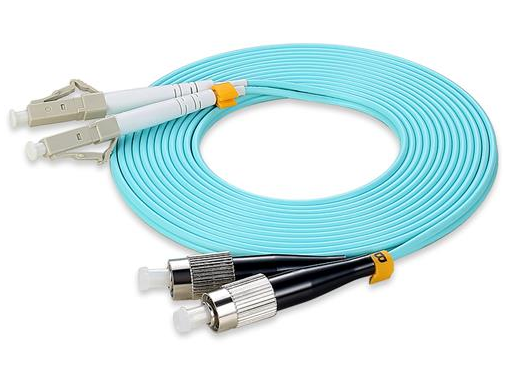Optical fiber jumpers, also known as optical fiber connectors, refer to the connector plugs installed on both ends of the optical cable to realize the active connection of the optical path, and the plugs on one end are called pigtails. In order to help you understand and understand fiber optic patch cords, let me tell you what types of fiber optic patch cords are commonly used.

Fiber Jumper
1. LC optical fiber jumper: developed by BELL (Bell) Institute, the connector is similar to SC, but smaller than SC. With easy-to-operate modular jack latches, the pin and sleeve size is 1.25mm, which is half the size used for common SC and FC. Connecting SFP optical modules, commonly used in routers, can increase the density of optical fiber connectors in the optical fiber distribution frame to a certain extent.
2. SC optical fiber jumper: developed by Japanese NTT company, the structure and size of its pins and coupling sleeves are exactly the same as FC type. The standard square connector, the fastening method of the plug-in latch type lock, does not need to be rotated, and is often used as the connector of the GBIC optical module, which is often used in routers. It has the characteristics of low price and small fluctuation of access loss. Commonly used for 100G BASE-FX connection.
3. FC fiber jumper: first developed by Japan NTT, FC is the abbreviation of English Ferrule Connector, the outer protective cover is a metal sleeve, and the fastening method is a turnbuckle. It is generally used on the ODF side, and is used most on the patch panel. It has the advantages of strong fastening and anti-dust.
4. ST optical fiber jumper: The outer shell is round, the fastening method is turnbuckle, the fiber core is exposed, and the plug is inserted and rotated half a circle to fix it with a bayonet. Often used as a 10BASE-F connector, it is mostly used in fiber optic distribution frames.
5. MPO (Multi-fiber Push On): The optical fiber jumper connector is one of the MT series connectors. The two guide holes with a diameter of 0.7mm on the left and right of the ferrule end face and the guide pin (also called PIN pin) for precise connect. MPO connectors and fiber optic cables can be processed to produce various forms of MPO patch cords.




